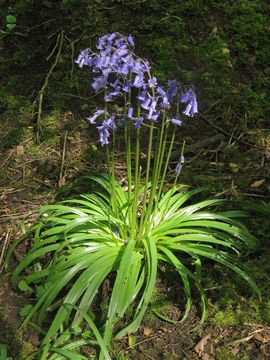 |
Bluebell (Hyacinthoides non-scripta)
Also known as Wild Hyacinth, this well-known native perennial likes shady places and can be considered a good indicator of ancient woodland, though it can persist long after the woods have gone. It hybridizes readily with the garden (or Spanish) bluebell, Hyacinthoides hispanica, which can also be found in Craigton Woods. |
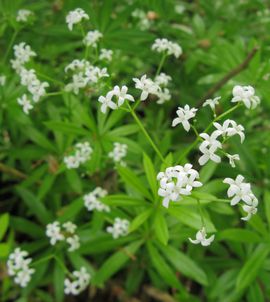 |
Woodruff (Galium odoratum)
With tiny white flowers above leafy whorls, this plant has a hay-like scent which is only apparent when dried. Dried bunches are used both to give a pleasant scent and in cupboards to deter moths. The dried plants can also be used to flavour liquids.
A native perennial which likes shady places and is considered a good indicator of ancient woodland. |
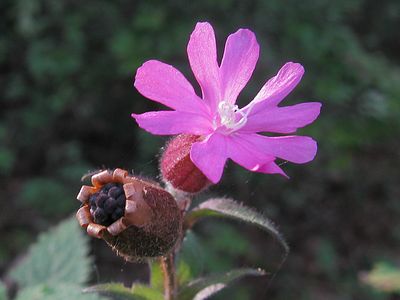
|
Red campion (Silene dioica)
A native perennial which is often found growing among bluebells as well as in more open habitats |
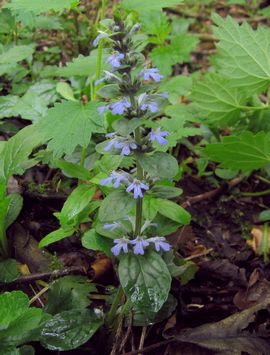 |
Bugle (Ajuga reptans)
A native perennial which can grow in a wide variety of habitats, often in large numbers. |
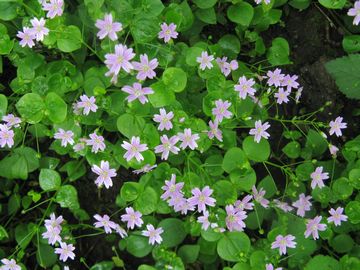 |
Pink purslane (Claytonia sibirica)
Native to western North America and eastern Asia. Cultivated in the UK soon after the middle of the eighteenth century and recorded in the wild by 1840, since when it has spread rapidly and often covers large areas in woodland. |
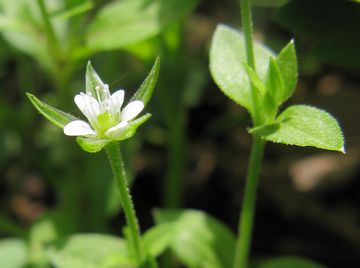 |
Three-nerved sandwort (Moehringia trinervia)
Each leaf has 3 veins. A native annual which is less common in Scotland than in the rest of Great Britain, it likes bare places in old woods and is considered an indicator of ancient woodland. |
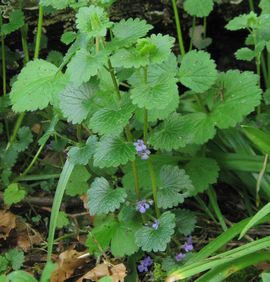 |
Ground-ivy (Glechoma hederacea)
A native perennial which spreads by runners. In Scotland it is found mainly in the central belt. It has been used in the making of beer and in herbal teas. |
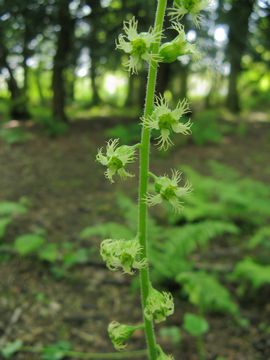 |
Fringecups (Tellima grandiflora)
Native to western North America. Introduced to the UK as a garden plant around 1830. and recorded from the wild soon after the beginning of the 20th century. A rather insignificant plant at first sight, but it has a wonderful perfume, and look closely to see the tiny green fringed flowers. |
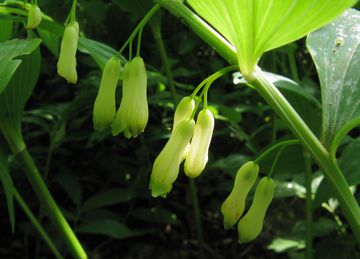 |
Solomon's-seal (Polygonatum multiflorum)
Although this plant is native in the south of England, it is introduced in Scotland and may be a hybrid of this species and another garden species. |
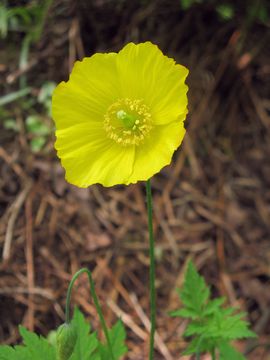 |
Welsh poppy (Meconopsis cambrica)
Native in parts of Wales and Ireland, but has spread elsewhere from gardens. Recent research has indicated that this poppy is probably not closely related to the blue Meconopsis poppies grown in gardens and may need to have its scientific name changed to reflect this. |